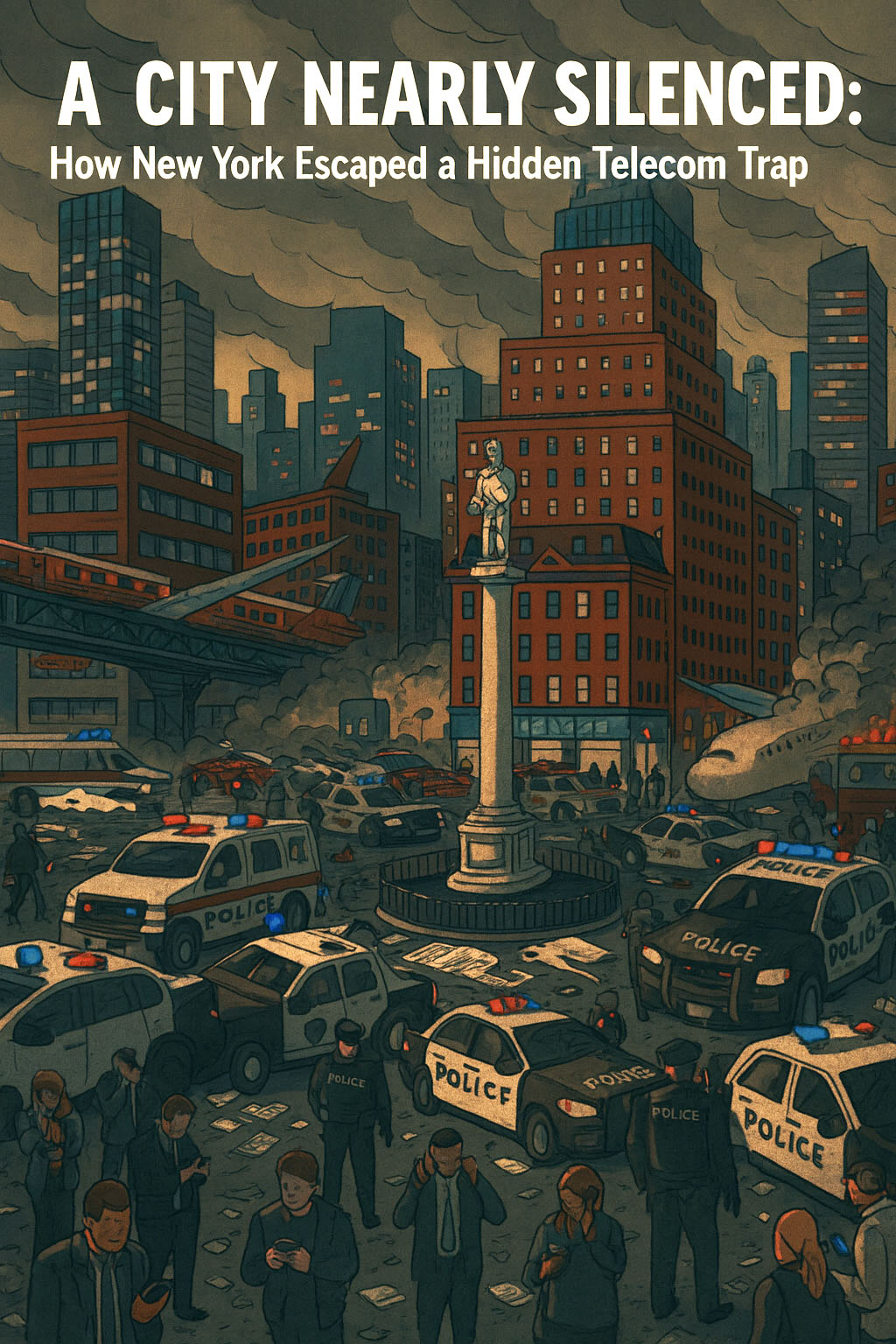Carlos Taylhardat: 3 Narratives News | September 23, 2025
A Story That Could Have Gone Very Wrong
There’s an old saying in journalism: bad news sells. Sadly, most headlines confirm it. But once in a while, good news hides inside the bad — and this week in New York, that’s exactly what happened.
As world leaders gathered at the United Nations and former President Donald Trump prepared a speech on globalism, police and federal agents uncovered something chilling: tens of thousands of devices strategically set up across the city, ready to overwhelm and jam cellphone networks.
Think of it like someone planting thousands of fake phones across the five boroughs, all programmed to talk at once until no one else could make a call.
“If this network had gone live, it could have been catastrophic,”
One federal investigator told Reuters. “We’re talking about the ability to choke emergency communications across an entire city.”
If you’ve ever tried calling 911 during a blackout, you’ll know how frightening that silence feels. Multiply that across a city of eight million people, and the stakes become clear.
What Was Found
Investigators say they discovered more than 300 powerful SIM servers and over 100,000 SIM cards — the tiny chips that let your phone connect to a network. Imagine a warehouse filled with endless racks of SIM cards, all wired to flood New York’s cell towers.
Left unchecked, the system could have:
- Sent millions of texts per minute.
- Crashed or slowed emergency calls.
- Masked criminal communications under the noise.
In short, it could have left the world’s busiest city unable to talk to itself, right as leaders from across the globe had arrived.
The Good News
Here’s the reassuring part: authorities stopped it. The plan — at least this part of it — is now foiled.
“New Yorkers should know this system never went live,”
a Secret Service spokesperson told the Associated Press. “We acted quickly to dismantle the threat, and the city never lost its voice.”
Cameras across the city, along with digital trails left by the equipment, are expected to help investigators trace who was behind it.
So while the story began with something sinister, it ends, at least for now, with relief: the network is dismantled, and the city kept talking.
What We Don’t Know
We don’t know who placed the devices. We don’t know their motive. Officials are not saying whether it was a foreign actor, organized crime, or a massive fraud operation gone rogue.
What we do know is that the timing matters — the U.N. gathering makes New York a tempting stage for disruption. And the scale of the operation proves just how fragile our communications systems can be.
Why It Matters to You
If you live in any major city, you rely on your phone in ways you probably don’t think about: ordering a cab, transferring money, checking in on kids, calling 911.
This episode is a reminder that the invisible web of connections holding our cities together is vulnerable, and that people are willing to exploit that weakness.
For now, though, New Yorkers can take comfort: one of the most dangerous plots you’ve never heard of didn’t succeed.
Narrative 2 — What Could Have Happened
Imagine, for a moment, that the discovery came too late, midnight in Manhattan. Tens of thousands of SIM devices switched on at once. Within minutes, cell towers jammed.
First, the 911 system collapses. Operators can’t receive calls, and dispatchers can’t route fire trucks or ambulances. For every minute of silence, estimates suggest dozens of emergencies go unanswered. In a city like New York, that could mean hundreds of lives at risk in a single day.
Next, the airports. JFK, LaGuardia, and Newark rely on cellular backup systems for everything from staff coordination to security alerts. With networks jammed, ground crews struggle to confirm flight paths, and security checkpoints slow to a crawl. At worst, the Federal Aviation Administration could be forced to ground flights nationwide.
Then the financial district. Wall Street traders depend on split-second communications; banks rely on two-factor authentication sent over text to verify billions in daily transactions. In a total outage, markets could seize, and billions could vanish in delayed trades.
The ripple spreads to ordinary life: families cut off from loved ones, delivery drivers unable to reach customers, commuters stranded. A single day of disruption could cost the city billions.
“This wasn’t just a prank,” one cybersecurity analyst told NBC News. “If activated, it would have been the largest denial-of-service attack ever attempted on a physical city.”
At its most extreme, officials warn, the chaos could have resembled a citywide blackout — not of lights, but of voices. And during the U.N. General Assembly, when security is already stretched, that kind of silence could invite panic.
Key Points
- Police and federal agents found a massive cache of devices designed to overwhelm New York’s cell networks.
- More than 100,000 SIM cards and 300 servers were seized.
- The system could have jammed emergency calls and masked other crimes.
- No one has been publicly identified as responsible, but investigations are ongoing.
- The immediate threat is gone — a quiet but important victory.
Suggested Titles (SEO-friendly)
- “New York Police Foil Telecom Plot: 100,000 SIM Cards Seized”
- “How Secret Service Stopped a Cellphone Blackout at the U.N.”
- “A City Nearly Silenced: Inside New York’s Hidden Telecom Threat”
- “Could New York Have Lost Its Voice? The SIM-Card Network That Never Went Live”
- “Foiled in Time: How a Telecom Trap Nearly Crashed NYC’s Cell Networks”

This article highlights a scary but real threat to our citys communication systems. Its a sobering reminder of how vulnerable we are, but also reassuring that authorities acted swiftly to prevent a disaster. Essential reading for anyone living in a major city.ai ease watermark remover